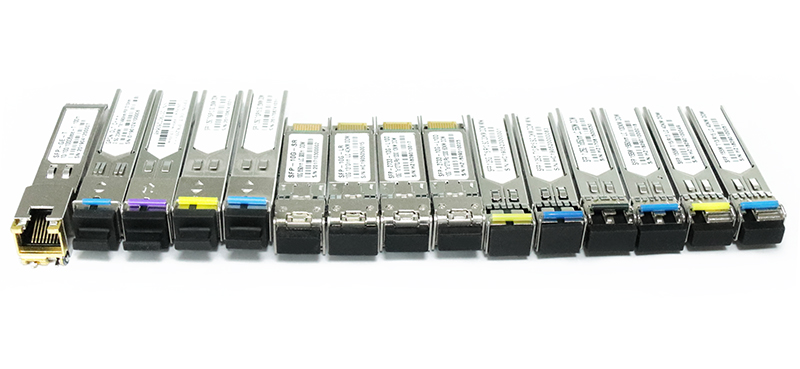First, the basic knowledge of the optical module
1.Definition:
Optical module: that is, the optical transceiver module.
2.Structure:
The optical transceiver module is composed of an optoelectronic device, a functional circuit and an optical interface, and the optoelectronic device includes two parts: transmitting and receiving.
The transmitting part is: an electric signal inputting a certain code rate is processed by an internal driving chip to drive a semiconductor laser (LD) or a light emitting diode (LED) to emit a modulated light signal of a corresponding rate, and an optical power automatic control circuit is internally provided therein. The output optical signal power remains stable.
The receiving part is: an optical signal input module of a certain code rate is converted into an electrical signal by the photodetecting diode. After the preamplifier, the electrical signal of the corresponding code rate is output, and the output signal is generally PECL level. At the same time, an alarm signal is output after the input optical power is less than a certain value.
3.the parameters and significance of the optical module
Optical modules have many important optoelectronic technical parameters. However, for the two hot-swappable optical modules, GBIC and SFP, the following three parameters are most concerned when selecting:
(1) Center wavelength
In nanometers (nm), there are currently three main types:
850nm (MM, multimode, low cost but short transmission distance, generally only 500M); 1310nm (SM, single mode, large loss during transmission but small dispersion, generally used for transmission within 40KM);
1550nm (SM, single mode, low loss during transmission but large dispersion, generally used for long-distance transmission above 40KM, and can directly transmit 120KM without relay);
(2) Transmission rate
The number of bits (bits) of data transmitted per second, in bps.
There are currently four types commonly used: 155 Mbps, 1.25 Gbps, 2.5 Gbps, 10 Gbps, and the like. The transmission rate is generally backward compatible. Therefore, the 155M optical module is also called the FE (100 Mbps) optical module, and the 1.25G optical module is also called the GE (Gigabit) optical module.
This is the most widely used module in optical transmission equipment. In addition, its transmission rate in fiber storage systems (SAN) is 2Gbps, 4Gbps and 8Gbps.
(3) Transmission distance
The optical signal does not need to be relayed to a distance that can be directly transmitted, in kilometers (also called kilometers, km). Optical modules generally have the following specifications: multimode 550m, single mode 15km, 40km, 80km, and 120km, and so on.






